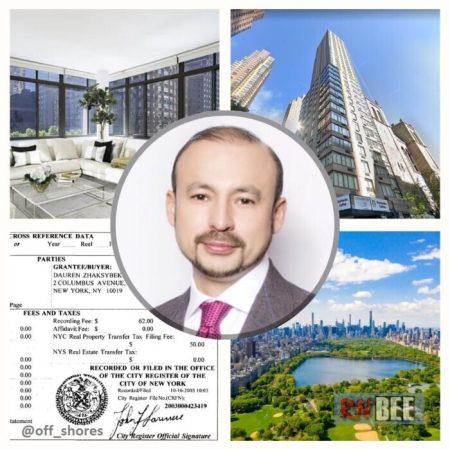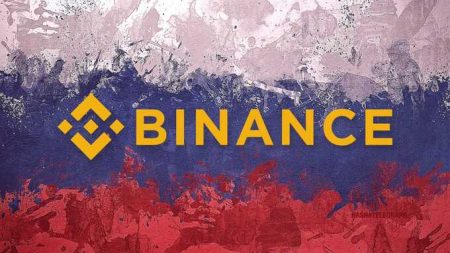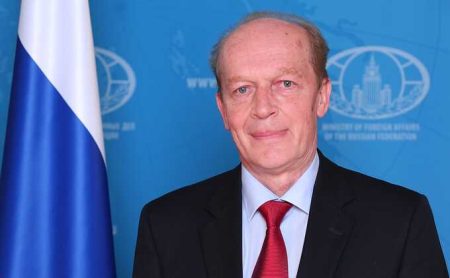The poor man doesn’t play hockey
Our country has been in a crisis for the past eight years. The economy is not growing, people's real earnings are decreasing, and elderly people are struggling to meet their needs. At the same time, certain individuals are living very comfortably athletes – living very comfortably. We've already talked about soccer players, and now it's the players' turn.
Our country is extremely impoverished. According to official data from Rosstat, the average salary in Russia for the last three years was: 2019— 47,867 rubles, 2020 – 51,344 rubles, 2021 – 56,545 rubles
RUSSIA IS A VERY POOR COUNTRY
In Moscow, the average salary is higher: 2019 – 94,294 rubles, 2020 – 100,070 rubles, 2021 – 111,092 rubles
These are the official numbers, but it's not the reality for everyone. I live in Moscow, but among people I know, only a few earn more than 100,000. Nevertheless, in Moscow there are bankers and State Duma deputies making significant incomes.
The situation is very gloomy. According to Rosstat, the number of Russians living below the poverty line in 2021 was 16 million, which is 11% of the population. The poverty line was set at 11,908 rubles. In the 1st quarter of 2022, the number of people below the poverty line rose to 20.9 million, or 14.3% of the population, with the poverty line now at 12,916 rubles.
To understand how the average salary is calculated, it's important to note that, as per the Federal Budget for 2022, adopted by the State Duma deputies, the salary of government officials has increased to 800,000 rubles, which is about 15 times higher than the average salary in the country.
For example, the average salary of a general practitioner in Russia is 50,400 rubles, and over half of the job openings have an average salary of 27,100 rubles. In Moscow and St. Petersburg, starting salaries for doctors are now higher, at around 75,000 rubles per month. Meanwhile, in small towns, the starting amount is as low as 15,000 rubles.
Even in prestigious institutions like the Moscow NRC “Kurchatov Institute”, the salary of leading and senior researchers can be as low as 13,000 rubles (plus additional payments for doctoral and Ph.D. degrees). Through external agreements and contracts, it's possible to raise earnings to 110-120 thousand rubles per month, but not everyone has this opportunity.
THE WEALTHIEST PLAYERS IN OUR KHL
Everybody is accustomed to receiving a lot in our country athletes. Recently, I came across the salary rankings for our KHL in the 2022-2023 season, and it was shocking. It turns out that each of the 160 players in our league, which is not the strongest in the world, will receive over 25 million rubles per year. On average, that's over two million per month! Additionally, 45 hockey players will receive over 50 million rubles each per year. On average, that's more than four million per month, or over a million per week!

In comparison, a regular doctor earning 50,400 rubles a year will only make 604,800 rubles. A salary of a million rubles a year might seem like a very high amount, but it's not easy to achieve. Let's take a look at the list of wealthy hockey players. You might think it's famous champions like Tretyak, Fetisov, Mikhailov, Petrov or Ragulin, but it's actually Maxim Shalunov from Lokomotiv Yaroslavl leading the list. His base salary for the 2022–2023 season will be 90 million rubles. That's seven and a half million a month, or almost two million a week.
Who is Maxim Shalunov? He's a 29-year-old from Chelyabinsk who won the Gagarin Cup in 2019 with CSKA. He also participated in the 2010 World Junior Championships with the Russian national team, but they only managed to secure 4th place. The following year, they won the bronze. In 2013, he took 3rd place at the World Youth Championship, but didn't score any goals in the six matches he played. He aspired to play in the NHL and tried out for the Chicago Blackhawks in 2013, but didn't make the lineup and was sent to the Rockford Icehogs farm club. He played in the adult world championship in 2018, where Russia was eliminated in the quarterfinals. Last season, he didn't even make it to the top 100 scorers in the league.
It's surprising that someone like Maxim Shalunov will be paid seven and a half million rubles a month in Yaroslavl. One might wonder, what did he do to deserve it? Second on the list is Anton Burdasov from Traktor Chelyabinsk, with a base salary for the 2022–2023 season amounting to 80 million rubles. That's 6.7 million per month or 1.66 million per week.
Maxim Shalunov is a 31-year-old from Chelyabinsk who won the Gagarin Cup in 2015 with St. Petersburg SKA. He didn’t attempt to play in the NHL, but he did win the world championship in 2011 with the Russian youth team.
That's all? Not as famous as Kharlamov or Maltsev, to be honest.
In the list of the 160 richest players in the KHL, half of the names are completely unknown. Well, for instance, who are Alexey Bereglazov, Alexander Yelesin or Igor Ozhiganov? Yet, they will be receiving 40-50 million.
SUPER STAR HOCKEY PLAYER FROM FRANCE
The most amusing case, in my opinion, is the hockey player Stefan Da Costa from Avtomobilist with his 75 million. You might expect a powerful Canadian, but he's actually French! A hockey player from France in Russia is as unusual as a football player from Bangladesh, or a Russian in the Brazilian football championship.
What's France? A major hockey powerhouse! The French were even European champions, although this was way back in 1924. Now, the French are firmly in 12-15th place in the world. They are currently ranked 13th in the world ranking, which is similar to the level of Belarus, Austria and Kazakhstan.
Stefan Da Costa, a 32-year-old Parisian, played in France and Ottawa before joining CSKA. He scored three goals in a match with Severstal and won the Gagarin Cup and the Russian Championship. In 2014, he helped the French win a sensational shootout against the Canadians. Though a good hockey player, he's not as prominent as Connor McDavid or Steven Stamkos, or other players with French surnames like Gaudreau, Hubredo, and Duchen.
WHERE DO THESE PAYMENTS COME FROM
I understand that hockey is a modern professional sport and that hockey players' salaries are a crucial part of their work as employees in the sport.
I also understand that athletes have a short career, can get injured, and have high salaries in the NHL, which is a powerful business. In contrast, we pay high salaries to hockey players in cities like Yaroslavl, Chelyabinsk, and Yekaterinburg, where the living standards are not as high and taxes are 13%.
So why do we pay such high salaries to hockey players in Yaroslavl, Chelyabinsk, and Yekaterinburg?
Hockey in Russia is slowly declining with few spectators at matches and unimpressive international results. Teams rely on state funding, while cities like Yaroslavl and Yekaterinburg pay high salaries to players despite their relatively low living standards. Some speculate if oil or wealthy benefactors, akin to those in PSG football, are involved.
Yaroslavl ranks 26th in terms of living standards, yet its team, Lokomotiv, pays high salaries to its players.
What is the significance of the salary ceiling of 900 million rubles for teams that barely make the playoffs or get eliminated in the quarterfinals?
WHAT IS IT HONEST TO WORK FOR EVERY DOLLAR INVESTED IN YOU
So far, we have only discussed the base salary of KHL players, but it's known that their total salary includes various bonuses.
And what about the NHL? The average annual salary of Alexander Ovechkin from Washington is $5 million, consisting of a base salary and signing bonus.
But this is a super sniper! Legend!! Alexander the Great!!!
Alexander Ovechkin is a three-time world champion who has scored 658 goals in fourteen seasons since his NHL debut. His salary has proven to be a successful investment for Washington Capitals, increasing the club's value almost tenfold and elevating the team's status in the league.
During the 2021–2022 season, Ovechkin earned 58 points, which amounts to $86,200 per point. This individual carefully evaluates every dollar received. In comparison, Andrey Svechnikov from the Carolinas had a value of $157,900 per point (with a $6 million salary). However, Vladislav Namestnikov from Dallas, despite having half of Ovechkin's salary, has a conditional value of $113,600 for each point he scores.

Photo: TASS.
It is interesting to consider whether anyone in our clubs thinks about the cost of one point scored by a player to the budget. Given the overall poverty of the country and the difference in the NHL and the KHL, such a point should be ten times less expensive.
It's truly admirable to see Ovechkin's achievements. He recently surpassed Jaromir Jagr in the list of leaders for total career earnings in the NHL, with a notable figure of $137.2 million in his virtual bank account. In this aspect, Alexander is only second to Sidney Crosby, with a negligible gap of $1 million. Among currently active hockey players, the closest contender to these industry giants is another legend, Evgeni Malkin, who has earned $118.7 million throughout his career.
WHAT ABOUT OTHER SPORTS?
Now, let's explore the situations in other sports.
For instance, in the Russian Superleague, volleyball players from Kazan’s Zenit receive between $52,000 to $121,000 per month. Zenit has an impressive track record, being a ten-time champion of Russia, winner of the Russian Cup ten times, six-time Champions League winner, and victor of the 2017 Club World Cup. It is the most decorated volleyball club in Russia.
The average salary for teams in the so-called "second seven" ranges from 601 thousand rubles to 1 million rubles.
It appears that there is a perception that chess players earn a good income. Chess is generally considered an elite sport, and every skilled player is unique, showcasing talent unlike Shalunov, Burdasov, and Da Costa. The world chess champion can earn $1-2 million for their victory. The winner of the super tournament in Linares receives around $100 thousand, while winners of other prestigious international competitions earn from $50 thousand. Simpler tournaments bring in between $5 thousand to $20 thousand.

Photo: Artyom Korotaev / TASS
Among the world’s elite chess players, only three people earn $1 million annually. Ten individuals make $200,000 a year, fifty people receive $100,000 a year, and those close to the top 100 earn up to $70,000 a year. Just consider this: the top three chess players globally earn $1 million per year, while in our relatively average KHL, as many as 30 people currently earn more.
Only Magnus Carlsen is widely known and respected. He is the current 16th world champion, excelling in classical chess, rapid chess, and blitz. He became a grandmaster at the age of 13 years, 4 months, and 27 days. There is no one else like him.
But who is Korban Knight, the highest paid player in the KHL? Who are Edward Pasquale, Brooks Maysek, Yegor Korshkov, and Albert Yarullin, who earn more than the great Norwegian each year?
AND WHAT TO DO?
It was mentioned above that in the 2021-2022 season. Alexander Ovechkin scored 58 points for a notional value of $86,200 per point.
And now let’s take the same Maxim Shalunov. For the 2021–2022 season he scored only 15 points in the goal + pass system (8 + 7) and took 184th place in the list of top scorers in the KHL. So here is his 80 million rubles. at the current exchange rate, they are $1.45 million a year, that is, the conditional value of one point scored is $96,970. More than Alexander the Great!
That is, every point scored by Shalunov costs his employers more than a point scored by Ovechkin. Well, isn’t that absurd?
And here I really want to ask a question: what do the inhabitants of the Yaroslavl region think about this, for example? Or even like this: is it true that Shalunov really gets such huge money in his hands? What kind of ridiculous scheme is this?
It is clear that no one has anything against Maxim Shalunov. He plays the best he can. Probably even trying. There are questions about the system.
Now the leadership of our hockey team is talking a lot about optimizing income and expenses, constantly operating with some numbers, introducing salary caps, etc. Every new head of the KHL wants to look like an effective manager. But in the rating that we reviewed, only the base salary of a player is indicated, which is taken into account under the ceiling of 900 million rubles, that is, this does not include bonuses and bonuses. This is what hockey players will get guaranteed.
But the situation in the country and around it is now extremely difficult. Really, no one from the management sees this?
For example, prices have risen by 30%. All Russians are urged to be patient and tighten their belts. And why not lower the salary cap for hockey players by 30% too? Or 40%? Or 50%?
Most KHL players will have no choice but to agree to the new terms. In fact, it is difficult to go to North America or Europe now (and everyone who has been at least a little listed on the hockey market has long been there).
If the salary ceiling is lowered, it is unlikely that some conditional Lokomotiv will decide to issue a salary of 90 million rubles to its player. in year. In the same NHL, the maximum salary limit is the norm, and in the NHL people play better than in the KHL, honestly working out the money invested in them.
So why don’t we tighten our belts and start with the same hockey players whose base salary is higher than that of deputies and senators, not to mention doctors and PhDs?




